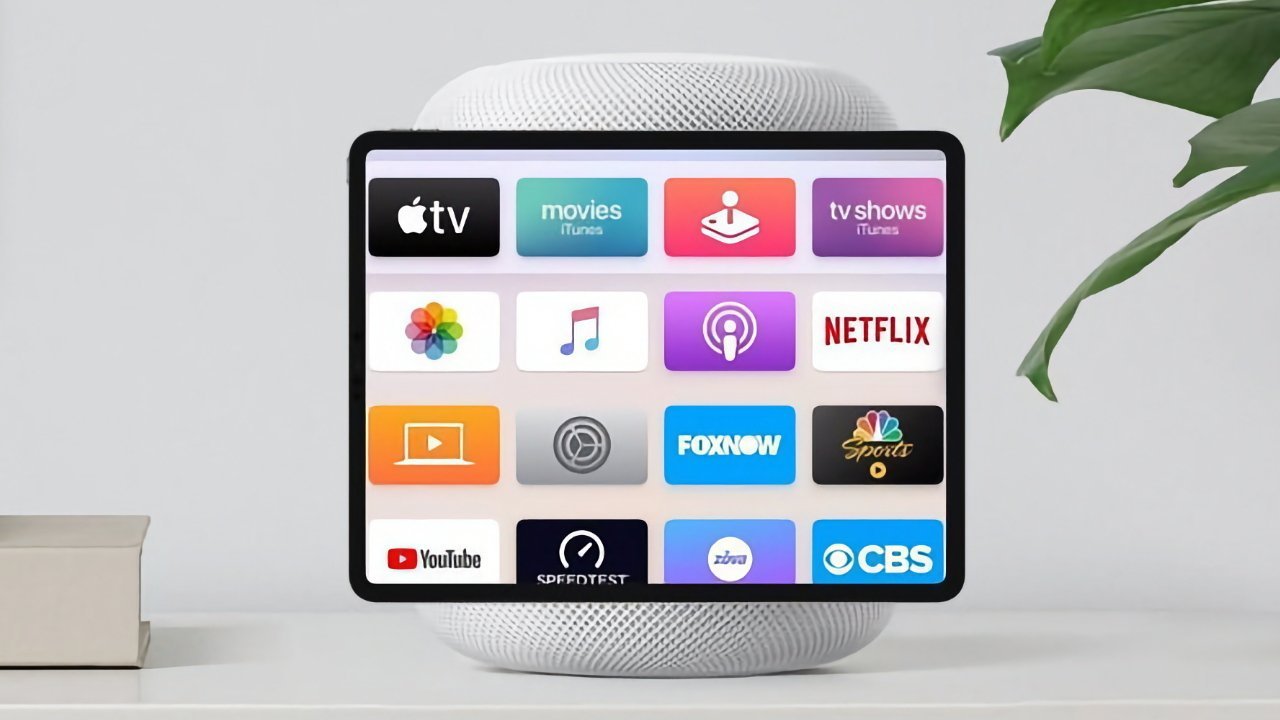Surprising rumor says new HomePod will get high-quality OLED screen
South Korean press unexpectedly claims that Apple's anticipated new HomePod with a display will use high-quality OLED screens, all of which are to be manufactured in China.

An artist's rendition of a HomePod with a display
The much-rumored HomePod with a built-in screen has most recently been predicted to be launched in the second half of 2025. But Chinese display firm Tianma is said to have already got the exclusive order, and will be making OLED screens.
According to Seoul Economic Daily, the company is believed to be planning screens of between 6 inches and 7 inches, and using the low-temperature polycrystalline silicon (LTPS) version of OLED. Reportedly, this is also the first time that a Chinese company has gained an exclusive contract, beating South Korean rivals.
Reportedly Tianma is able to provide the HomePod screens at a cost between $10 and $15 less than Korean firms.
"The previous generation of HomePods did not gain much popularity, and the products introduced this time are also new form factors, so we have no choice but to pay attention to price competitiveness," an unspecified industry spokesperson said (in translation). "[With] LTPS, the gap between Korea and China is relatively small, and the cost-effective Chinese products would have been attractive."
It's claimed that Apple is working with Chinese firms to help them lower costs through technology innovations. As part of this effort, Apple is said to have opened four display research centers, in Beijing, Shenzhen, Suzhou, and Shanghai.
Perhaps as a consequence of this, the Seoul Economic Daily also reports that China's BOE display firm is to be one supplier of OLED screens for the MacBook Pro within two to three years.
The exclusive use of a Chinese firm for the HomePod, though, is particularly significant as Apple continues to move away from its over-reliance on China as its sole source for many components and devices. It's also significant as US/China trade tensions are continuing.
However, while the sources say that the new HomePod will use the lower-cost LTPS version of OLED, it still seems overkill for a screen that will presumably only be glanced at. Apple is expected to make this device into a Home Hub, which would mean displaying HomeKit controls, but the screen still won't be looked at as much as an iPhone or iPad.
Seoul Economic Daily does not have any noticeable track record in reporting Apple leaks. However, it claims to have sources within the display supply chain.
Tianma was previously rumored to be competing to provide screens for the forthcoming iPhone SE 4.
Read on AppleInsider

Comments
Please Apple, no iPad on a stump.
It almost seems AR/VR products are just as successful as these types of products, and I see a better future eye wearables than these ambient computing audio devices.
Apple has introduced "Apple Intelligence," including plans to power a significantly enhanced Siri with it. The problem in the HomeKit environment is that none of the current home hardware can run it. Not HomePods, and not AppleTV. If Apple wants to be competitive in the smart home category, it would make no sense for them to require users to spend thousands to replace all their existing HomePods and Apple TV boxes just to gain access to AI-powered Siri and HomeKit advancements. Since they're also trying to set themselves apart in the AI category by emphasizing the privacy and security of on-device AI computations, it kind of leaves them a small number of options. They could introduce a new generation of HomePods and Apple TV boxes with expensive, premium processing hardware, and require users to buy a bunch of them to replace all of their current devices.
They could reverse their stated AI strategy and move HomeKit-related AI computations out to the cloud.
Or, they could do what I described above. Let users buy a single V8-powered Home Hub that can do all the AI heavy lifting inside the home, and let other HomeKit devices on the same network send all their AI queries to that single hub for processing. That would add AI to your existing HomePods and Apple TV. The other conjecture I'm making is that, rather than making a new Home Hub device be some sort of an awkward Frankenstein mash-up of a HomePod and an iPad, they might more sensibly make the Hub be a puck like an AppleTV box, and then include/sell separate super-thin networked HomeKit terminal screens. Those could be relatively cheap, because they would require minimal processing power internally, like even an Apple Watch S8 (or earlier chip) or whatever. For the cost of a single hub and a couple of thin screens, whole homes would be upgraded to the new AI-powered HomeKit, and all the complaints about Apple lagging behind on both smart home and Siri would be answered by Apple leaping ahead of the competition in a big way.